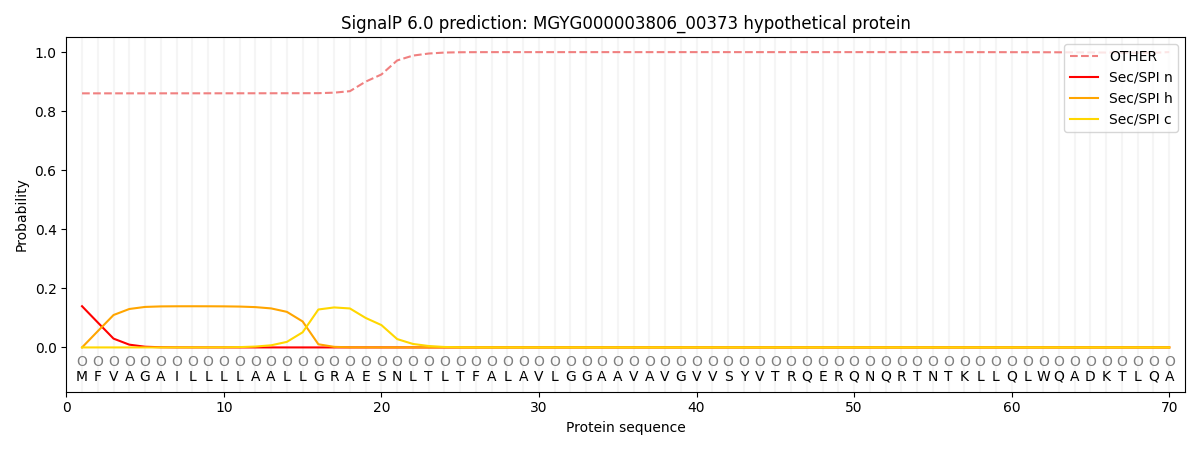You are browsing environment: HUMAN GUT
CAZyme Information: MGYG000003806_00373
You are here: Home > Sequence: MGYG000003806_00373
Basic Information |
Genomic context |
Full Sequence |
Enzyme annotations |
CAZy signature domains |
CDD domains |
CAZyme hits |
PDB hits |
Swiss-Prot hits |
SignalP and Lipop annotations |
TMHMM annotations
Basic Information help
| Species | ||||||||||||
|---|---|---|---|---|---|---|---|---|---|---|---|---|
| Lineage | Bacteria; Actinobacteriota; Actinomycetia; Mycobacteriales; Mycobacteriaceae; Corynebacterium; | |||||||||||
| CAZyme ID | MGYG000003806_00373 | |||||||||||
| CAZy Family | GT4 | |||||||||||
| CAZyme Description | hypothetical protein | |||||||||||
| CAZyme Property |
|
|||||||||||
| Genome Property |
|
|||||||||||
| Gene Location | Start: 11178; End: 13676 Strand: + | |||||||||||
CDD Domains download full data without filtering help
| Cdd ID | Domain | E-Value | qStart | qEnd | sStart | sEnd | Domain Description |
|---|---|---|---|---|---|---|---|
| COG4641 | COG4641 | 2.42e-17 | 369 | 657 | 74 | 357 | Spore maturation protein CgeB [Cell cycle control, cell division, chromosome partitioning]. |
| pfam13524 | Glyco_trans_1_2 | 2.26e-10 | 571 | 657 | 1 | 93 | Glycosyl transferases group 1. |
| pfam12996 | DUF3880 | 5.30e-07 | 427 | 504 | 1 | 78 | DUF based on E. rectale Gene description (DUF3880). Based on Eubacterium rectale gene EUBREC_3218. As seen in gene expression experiments (http://www.ncbi.nlm.nih.gov/geo/query/acc.cgi?acc=GSE14737), It appears to be upregulated in the presence of Bacteroides thetaiotaomicron vs when isolated in culture. |
| cd03801 | GT4_PimA-like | 0.003 | 404 | 657 | 88 | 363 | phosphatidyl-myo-inositol mannosyltransferase. This family is most closely related to the GT4 family of glycosyltransferases and named after PimA in Propionibacterium freudenreichii, which is involved in the biosynthesis of phosphatidyl-myo-inositol mannosides (PIM) which are early precursors in the biosynthesis of lipomannans (LM) and lipoarabinomannans (LAM), and catalyzes the addition of a mannosyl residue from GDP-D-mannose (GDP-Man) to the position 2 of the carrier lipid phosphatidyl-myo-inositol (PI) to generate a phosphatidyl-myo-inositol bearing an alpha-1,2-linked mannose residue (PIM1). Glycosyltransferases catalyze the transfer of sugar moieties from activated donor molecules to specific acceptor molecules, forming glycosidic bonds. The acceptor molecule can be a lipid, a protein, a heterocyclic compound, or another carbohydrate residue. This group of glycosyltransferases is most closely related to the previously defined glycosyltransferase family 1 (GT1). The members of this family may transfer UDP, ADP, GDP, or CMP linked sugars. The diverse enzymatic activities among members of this family reflect a wide range of biological functions. The protein structure available for this family has the GTB topology, one of the two protein topologies observed for nucleotide-sugar-dependent glycosyltransferases. GTB proteins have distinct N- and C- terminal domains each containing a typical Rossmann fold. The two domains have high structural homology despite minimal sequence homology. The large cleft that separates the two domains includes the catalytic center and permits a high degree of flexibility. The members of this family are found mainly in certain bacteria and archaea. |
CAZyme Hits help
| Hit ID | E-Value | Query Start | Query End | Hit Start | Hit End |
|---|---|---|---|---|---|
| QJA24662.1 | 5.82e-106 | 333 | 726 | 1066 | 1461 |
| QHH93487.1 | 8.43e-106 | 299 | 726 | 639 | 1082 |
| QFU01726.1 | 4.92e-105 | 330 | 726 | 1054 | 1452 |
| ABC56632.1 | 1.83e-83 | 333 | 778 | 373 | 812 |
| AVH37490.1 | 5.95e-72 | 333 | 656 | 1096 | 1409 |
Swiss-Prot Hits help
SignalP and Lipop Annotations help
This protein is predicted as OTHER

| Other | SP_Sec_SPI | LIPO_Sec_SPII | TAT_Tat_SPI | TATLIP_Sec_SPII | PILIN_Sec_SPIII |
|---|---|---|---|---|---|
| 0.878867 | 0.119499 | 0.000486 | 0.000276 | 0.000253 | 0.000625 |
